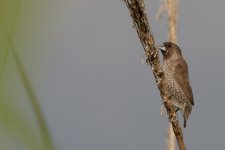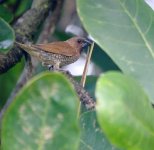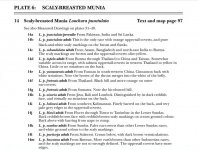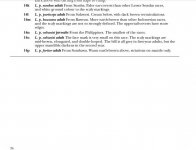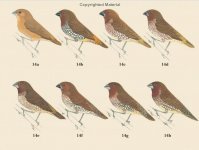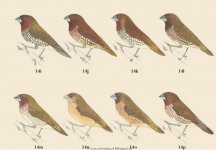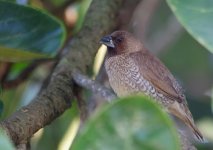Valéry Schollaert
Respect animals, don't eat or wear their body or s
Since October I'm based in Ormoc, island of Leyte (Philippines). I've seen about 30 species not listed for the island in Kennedy (Birds of the Philippines); most are though known by local birdwatchers.
I've found Scaly-breasted Munias breeding around Ormoc, in sugarcane. They also join Chestnut Munias in rice fields and groups of 30+ are common. This species is not listed on Leyte by any of HBW, Avibase or Kennedy. It is now known by local birdwatchers, so it looks like a real new.
However, I've experience of Lonchura punctulata cabanisi from Palawan and our bird here have different breast pattern, more "arrow"-like marks (while cabanisi has more rounded spots); the upperparts are also much greyer (more rufous in cabanisi).
So my question is: can we identify the subspecies? Of course, we dont know if the species came naturally or was introduced, so everything possible. However, it doesn't seem that locals have munias in captivity (they rather hate them as they eat rice) and I've the feeling it is a natural population.
Any comments or advice will be appreciated, thanks!
(the photo in the tree is from Palawan to show L. p. cabanisi and compare with the other photo, a bird taken on Leyte).
I've found Scaly-breasted Munias breeding around Ormoc, in sugarcane. They also join Chestnut Munias in rice fields and groups of 30+ are common. This species is not listed on Leyte by any of HBW, Avibase or Kennedy. It is now known by local birdwatchers, so it looks like a real new.
However, I've experience of Lonchura punctulata cabanisi from Palawan and our bird here have different breast pattern, more "arrow"-like marks (while cabanisi has more rounded spots); the upperparts are also much greyer (more rufous in cabanisi).
So my question is: can we identify the subspecies? Of course, we dont know if the species came naturally or was introduced, so everything possible. However, it doesn't seem that locals have munias in captivity (they rather hate them as they eat rice) and I've the feeling it is a natural population.
Any comments or advice will be appreciated, thanks!
(the photo in the tree is from Palawan to show L. p. cabanisi and compare with the other photo, a bird taken on Leyte).




